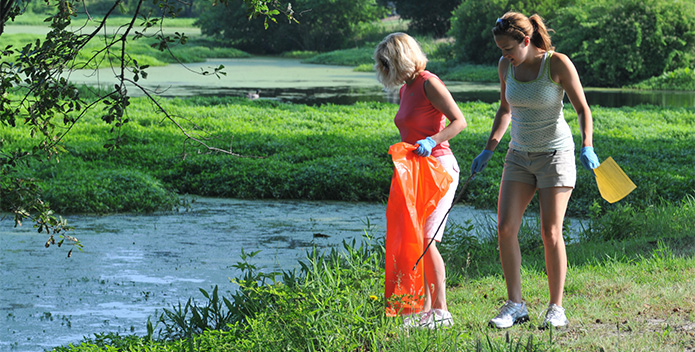The following first appeared in The Virginian-Pilot.
Our rivers, beaches, and parks are home to hundreds of species of plants and animals that survive in the river bottom, at the shoreline, and in the trees and shrubs. But there's another population, too—trash. Car parts lie half buried in the mud at low tide, plastic bags and bottles take cover among the bushes, and cigarette butts cautiously poke out of the sand.
There's nothing cute about trash in our waterways, and it is much more than an eyesore.
While its ugliness is reason enough for a call to action, the litter and debris affecting our waters are a direct threat to water quality, wildlife, and human health. Litter can leach poisonous chemicals and heavy metals into the water. It ensnares and chokes wildlife, leads to nasty cuts on our feet, and causes the proliferation of plastics floating around.
While we have our fair share of pollution in Hampton Roads, the good news is that litter is simple to fix. While litter is very easily identified and removed, simply not leaving it near the water in the first place prevents a lot of problems. We have a chance to address both solutions en masse on Saturday.
For nearly 30 years on the first Saturday in June, Virginians have rolled up their sleeves and volunteered for three brief but powerful hours on Clean the Bay Day.
Each year, more than 6,000 people across the commonwealth turn out that day, removing on average more than 150,000 pounds of harmful litter and debris from hundreds of sites all over the state. This big annual spring cleaning for our waterways has become a Virginia tradition.
When that many people comb the shores, some unusual items are bound to turn up.
Of course, people always find tires, shopping carts, mattresses, and an occasional toilet or two. Then there are some stranger items. There was the miniature bride-and-groom wedding cake topper, complete with veil; the dream catcher collection; the old Army stretcher; the giant teddy bear draped with Mardi Gras beads; a $50 bill; and my personal favorite—an intact light bulb covered with live oysters. To top it all off, nearly every year, somebody comes across a kitchen sink.
Some of these finds would be funny if they weren't so sad. In the past, local waterways were often seen as a convenient dumping ground. The thought was "out of sight, out of mind." But this mentality is not confined to the days when landfills were scarce or nonexistent. It continues today, as evidenced by the multitude and variety of litter recovered every Clean the Bay Day.
Fortunately, the impact of shoreline cleanups such as Clean the Bay Day lasts well beyond the day of the event. People often develop a zero tolerance policy for littering after they participate in a cleanup and realize the extent of the problem.
Furthermore, Clean the Bay Day sites tend to stay cleaner throughout the year. When parks and beaches are spotless, visitors are less likely to leave trash behind. One study has shown that areas with less litter are less likely to experience high crime rates.
Clean the Bay Day not only raises awareness. It fosters a culture of taking care of our shared public spaces. It's a fun and rewarding day for the whole family to give back to the parks, beaches, and waters we enjoy all year.
The program also is a model for cooperation with non-profits, private businesses and corporations, municipalities, military installations, scout groups, churches, and civic leagues, in addition to the wide range of individuals and families who return year after year.
The 29th Annual Clean the Bay Day will take place on Saturday, from 9 a.m. to noon at sites across Virginia. All seven cities in Hampton Roads sponsor cleanups. To find the nearest site and to register to take part, visit www.cbf.org/clean.
Tanner Council
Issues in this Post
Runoff Pollution Community Conservation Restoration Volunteers Water Quality CBF in Virginia Hampton Roads Office Virginia Office, Richmond



